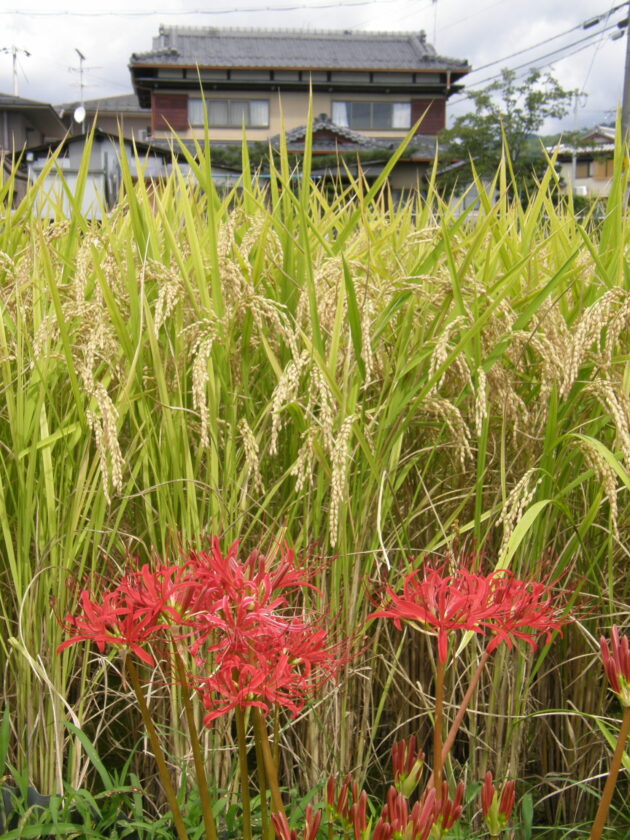
As recently as the early 20th century, verdant and productive rice fields dominated the flat lands on the northern outskirts of Kyoto, squeezing small villages up against surrounding foothills. However, in post-war years this fertile farmland has been encroached on and overwhelmed by waves of suburbanization. Old Taisho-era village farmhouses, their dirt-floor kitchens dominated by massive rice-cooking wood stoves, are now besieged by apartment complexes, nursing homes, parking lots and compact plastic-clad “my-homes.”

Despite this construction tsunami, some ancestral farming families have chosen not to cash in on the boom, preferring to maintain their traditional ties to the land, even as a part-time calling, aside from more regular year-round employment. Remnants of their estates, not so long ago plowed by suigyu (water-buffalos) and hand-planted by teams of women singing time-honored work-songs to the beat of a drum, remain as isolated pockets of the old rice culture—now farmed with expensive small-scale planting and harvesting machines that previous generations would have regarded as science-fiction, if such a concept had existed in their day. The next generation of young grandchildren sit on grandfathers’ laps, eagerly helping to steer small bull-nosed red tractors, and cling in delight to miniature combine harvesters, swaying on their rounds beside the filling rice-bags.

In this way, for a little longer, the old cycles are maintained. In spring, newly-flooded fields, dotted with freshly-planted shoots, mirror the open sky. In summer, rich green swathes patrolled by dragonflies turn inevitably to autumn gold; with harvest the fields’ margins are crowded with vermilion higanbana, equinox lilies. And through the year that follows, family members, young and old, eat the rice that they have grown, just as their ancestors did when they tilled these same fields.


Ken Rodgers is KJ’s managing editor. He resides in Iwakura (northernmost Kyoto), grows vegetables and, for the last three years, hand-planted, hand-weeded, hand-harvested rice.